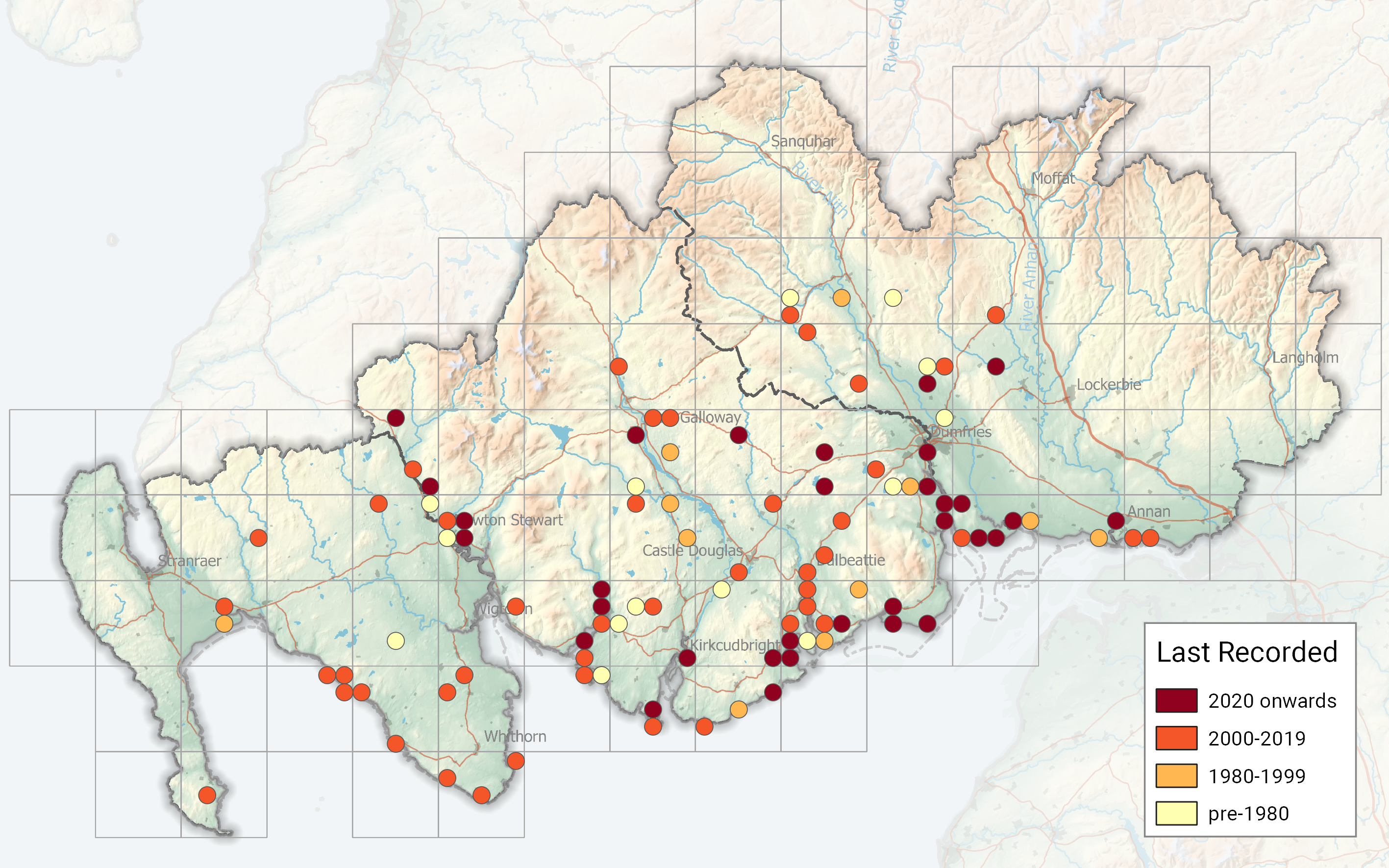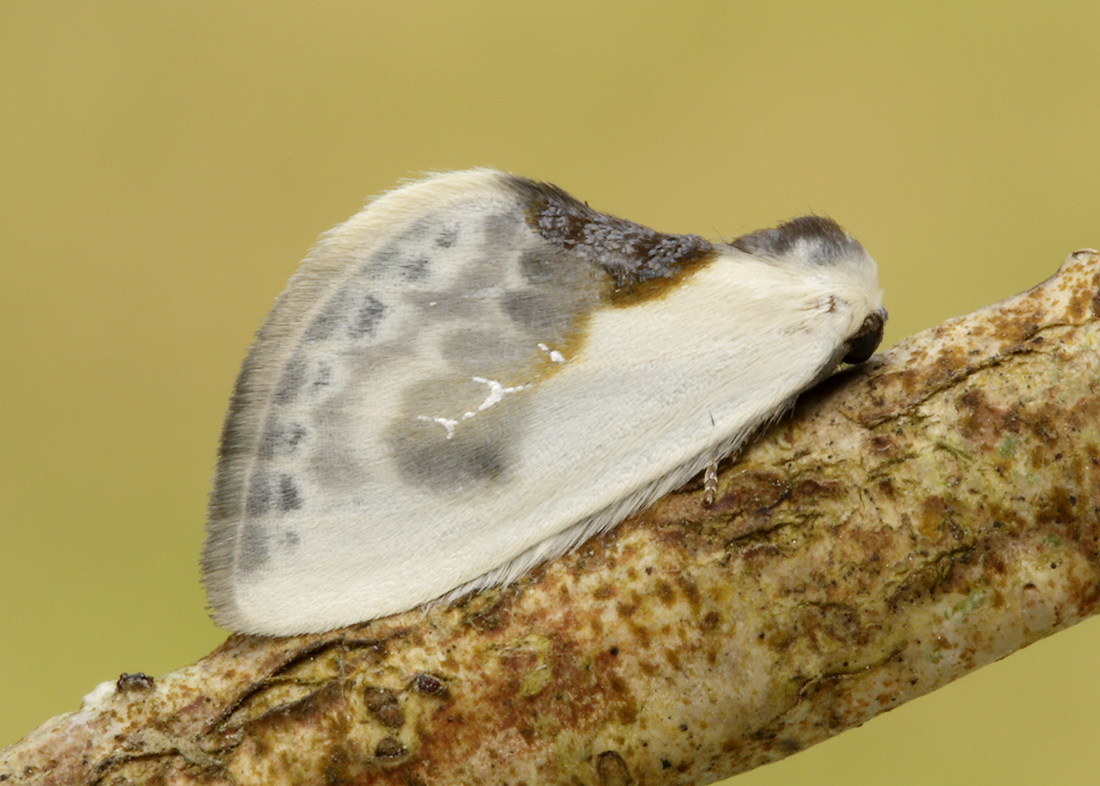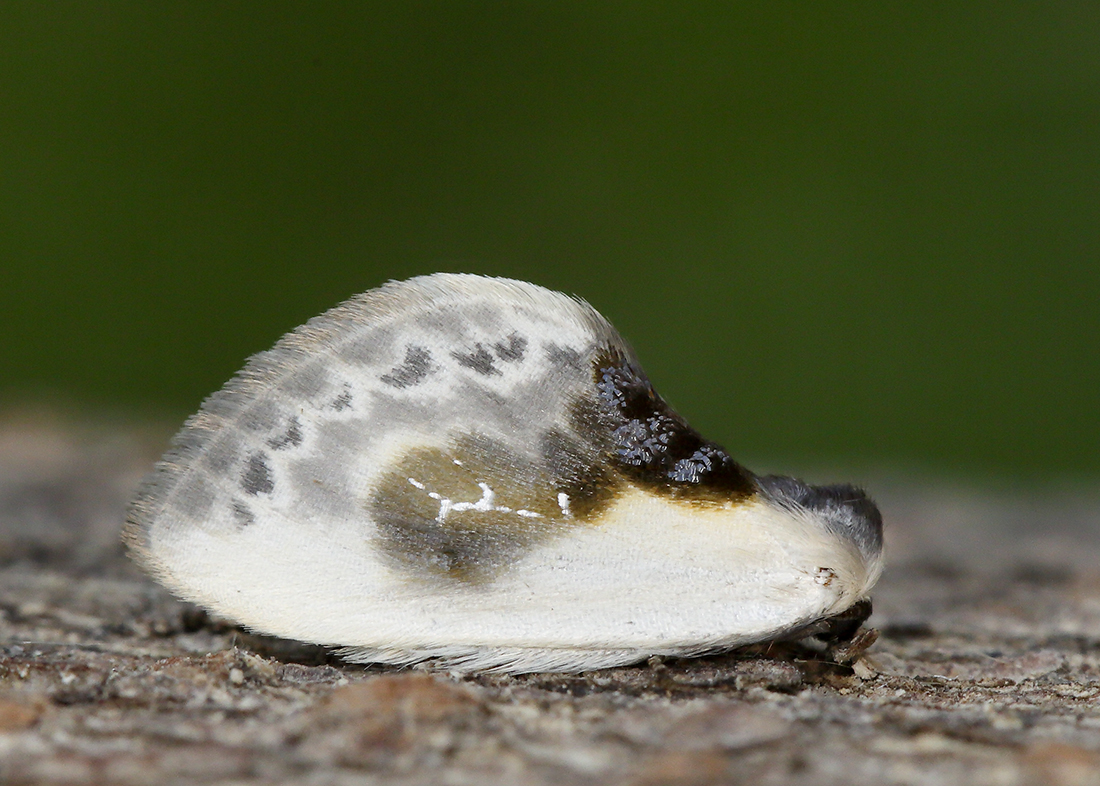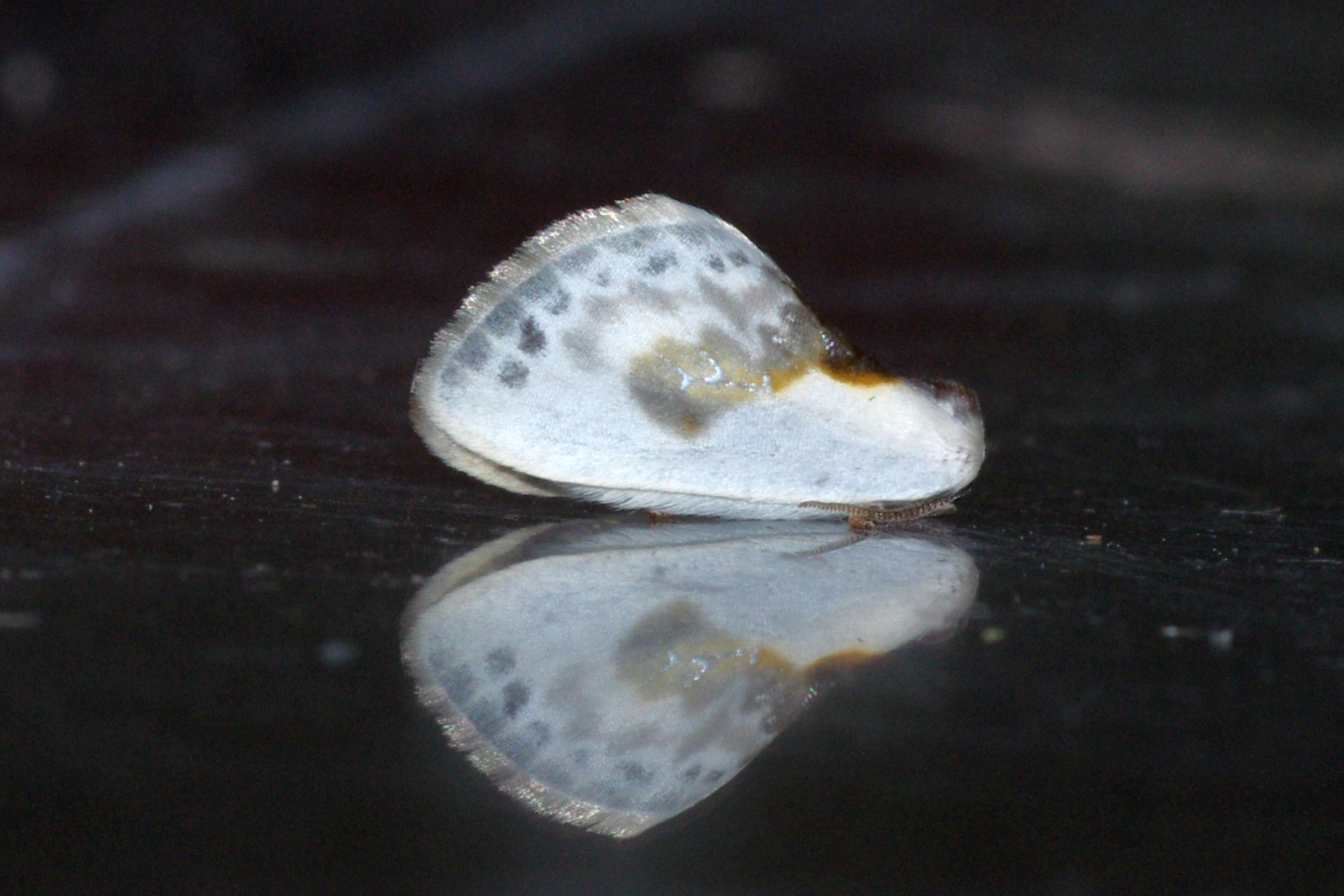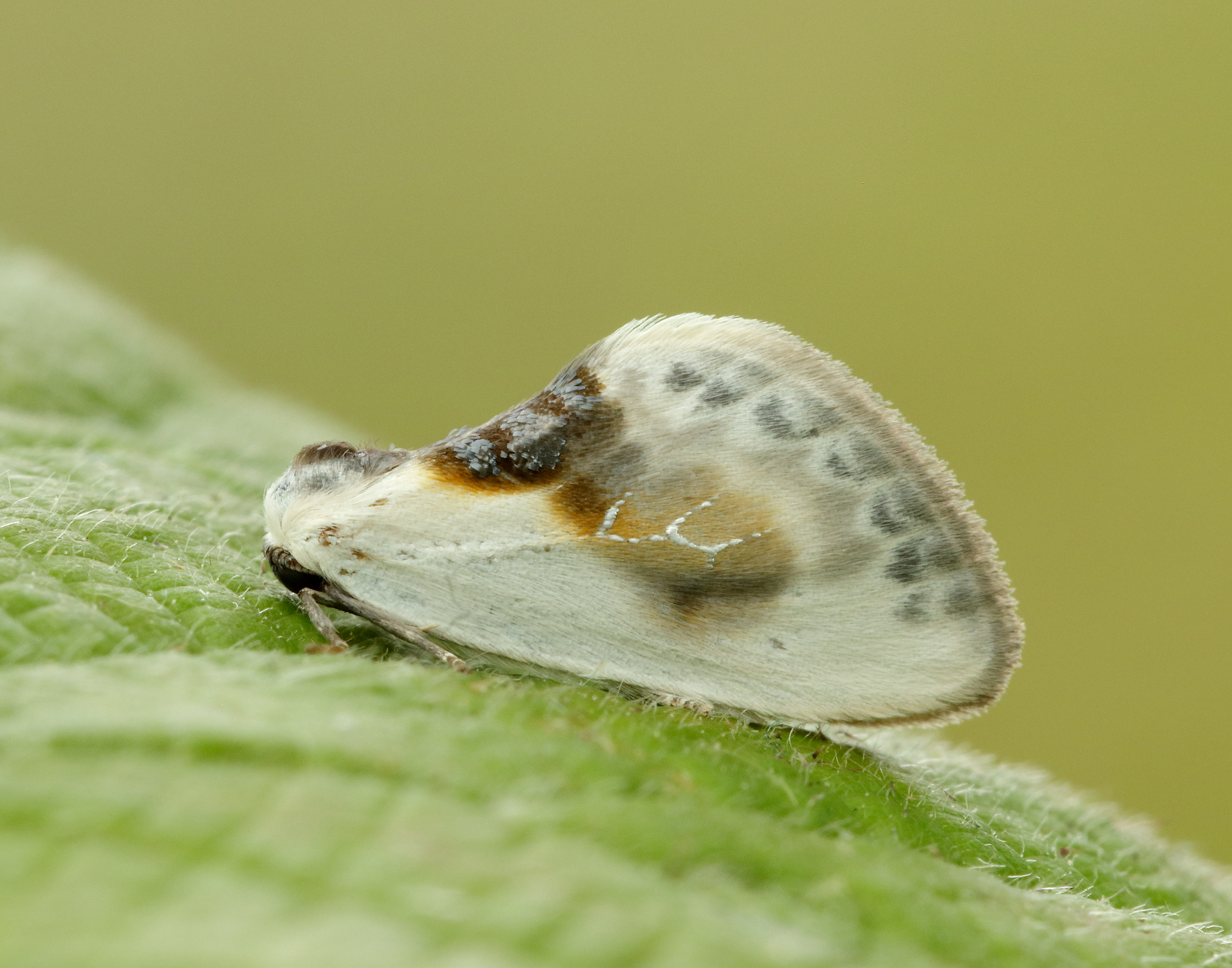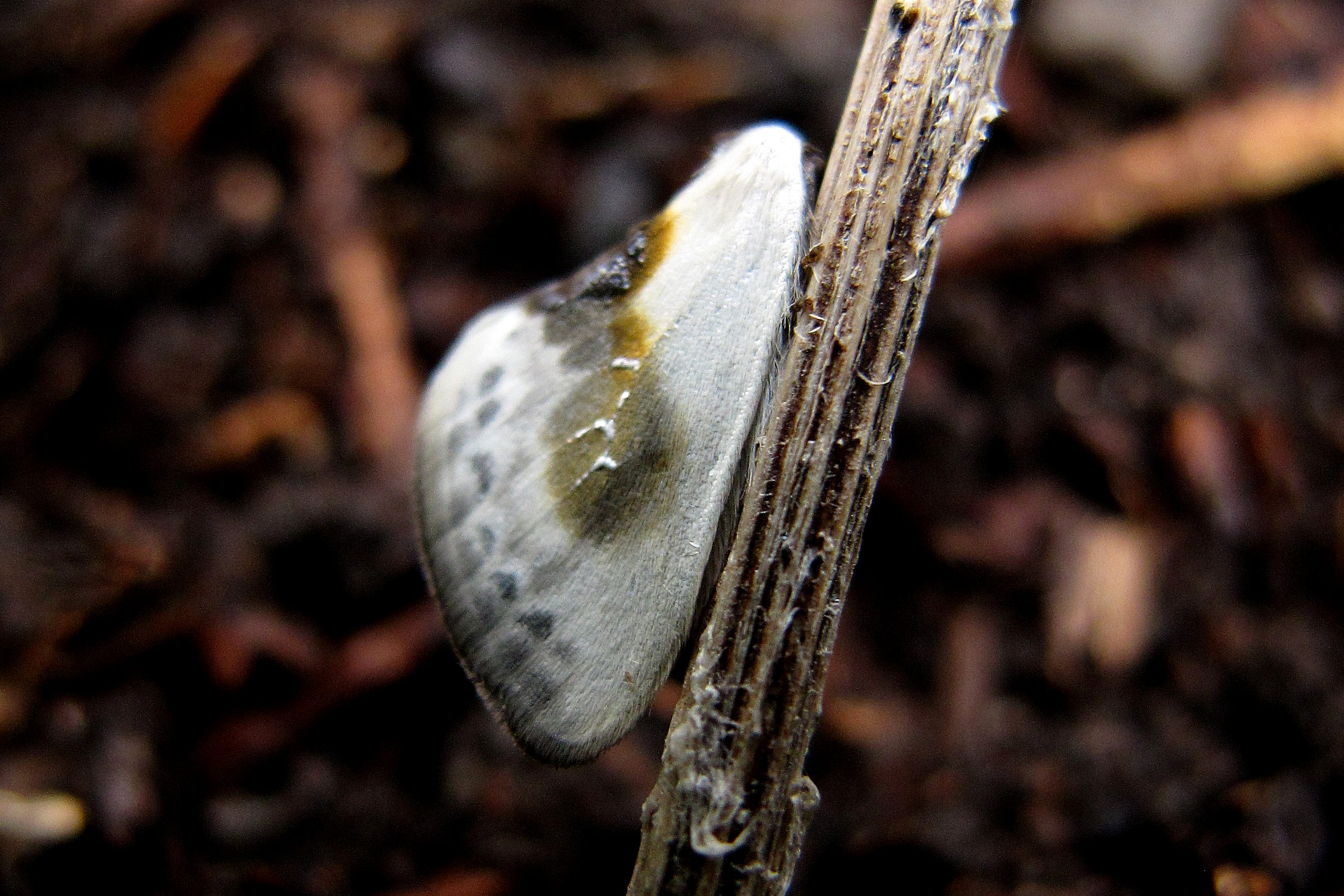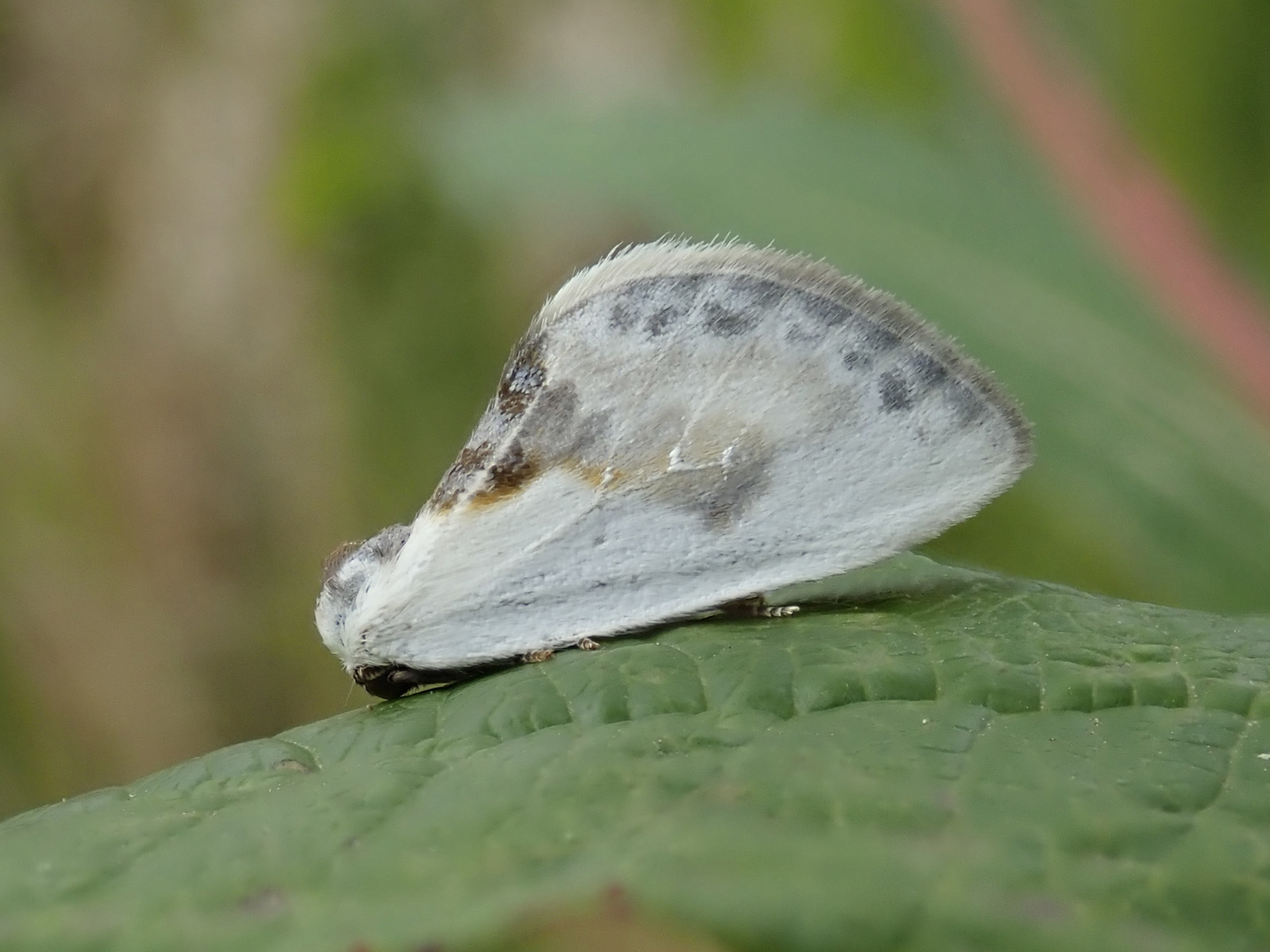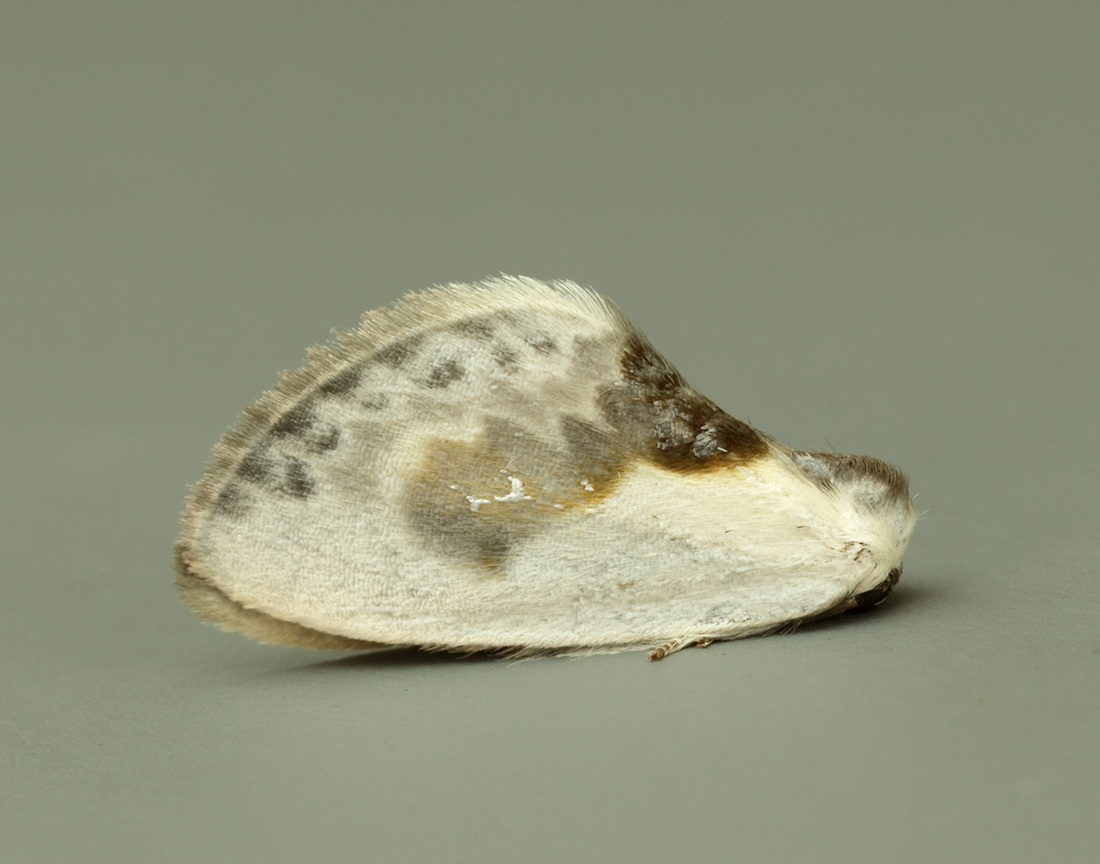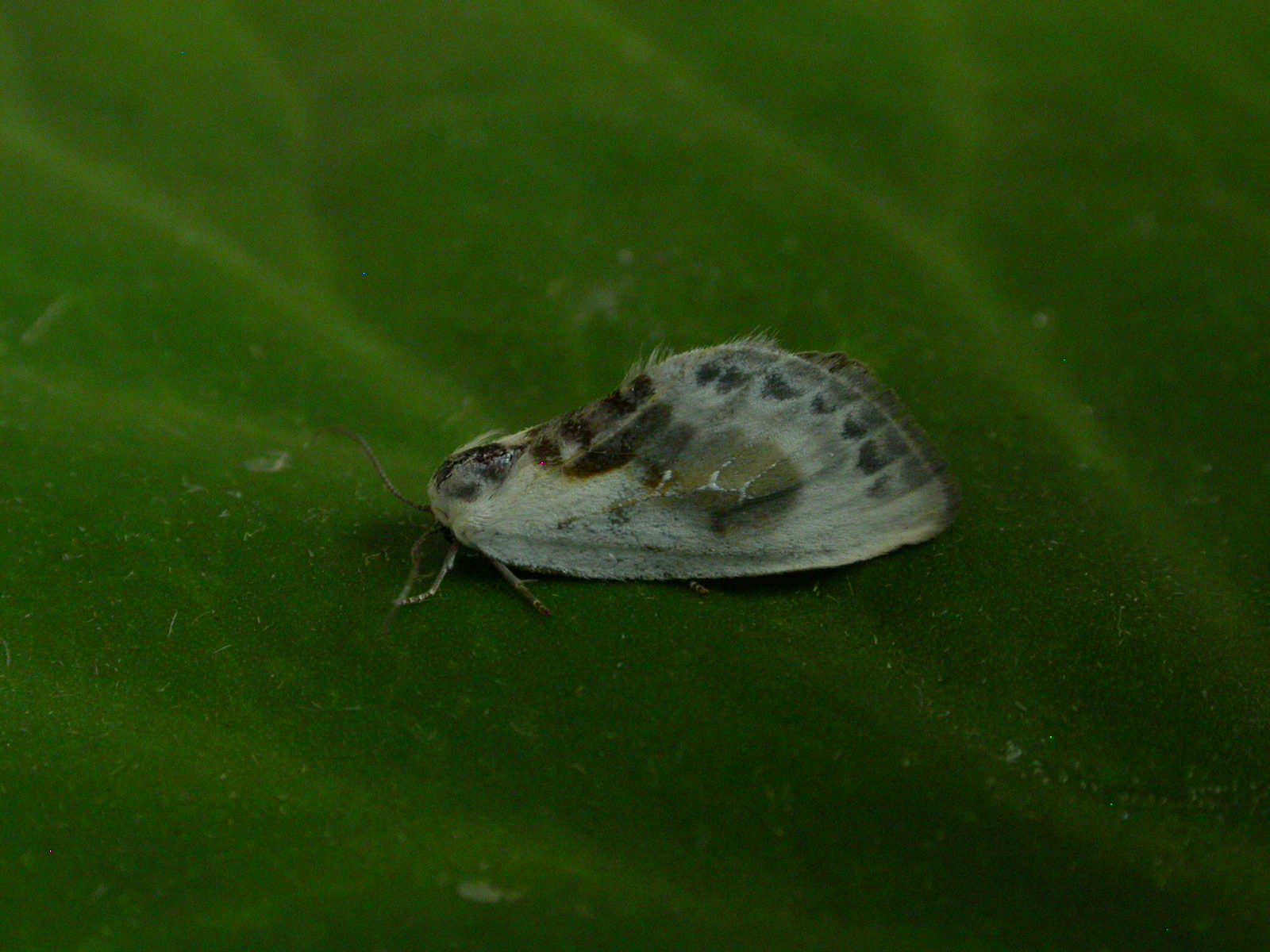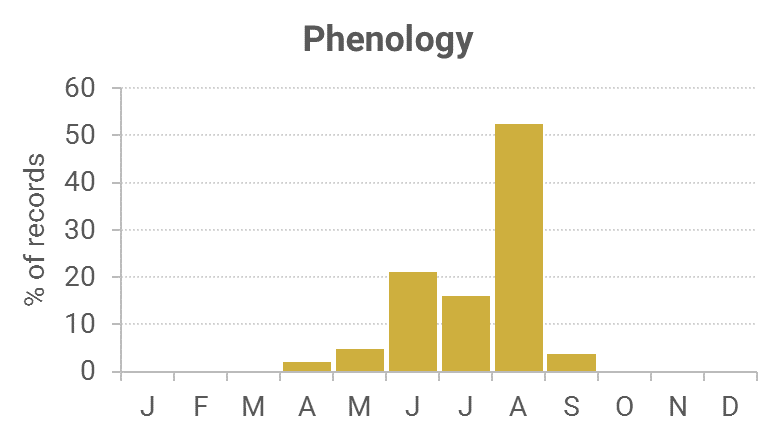Identification
Unmistakable. Resembles a bird dropping.
Life cycle
Two generations. Overwinters as a pupa, in a cocoon which is attached to leaf-litter, bark or debris. Larvae during mid-June to mid-July and late August to September.
Larval foodplants
Larvae feed mainly on Blackthorn, Hawthorn and Crab Apple.
Habitat
Hedgerows, scrub, open woodland and gardens.
History
Stainton (1859) gave the most northerly record as Newcastle. It was not recorded in Dumfries & Galloway until July 1863, when Lennon (1864) found it near Dalscone (VC72). W. Douglas Robinson (1870-71) had found one or two in June while mothing at dusk on Almorness (VC73). Buchanan White (1895) then recorded it his list of ‘Lepidoptera for Colvend and Southwick parishes’ (VC73). R. S. Gordon (1913) in his ‘List of the Macro-Lepidoptera of Wigtownshire,’ recorded it in June, 1896, and June, 1911, from Corsemalzie (VC74) and said it was very rare, possibly extinct.
During 1942 and 1943 Archibald Russell (1944) found it in the Gatehouse of Fleet area (VC73). Further records appeared in the Transactions by Cunningham (1946-47) for 1943 in Dumfriesshire and 1947 in Kirkcudbrightshire, followed by Sir Arthur Duncan and David Cunningham using MV light in 1951 and finding it not infrequent. From February 1975 to February 1977 a Rothamsted Light Trap was used by Colley (1981) at Eastpark Farm, Caerlaverock (VC72) who noted its occurrence.
Twenty-first century records suggest it is local across the region.

